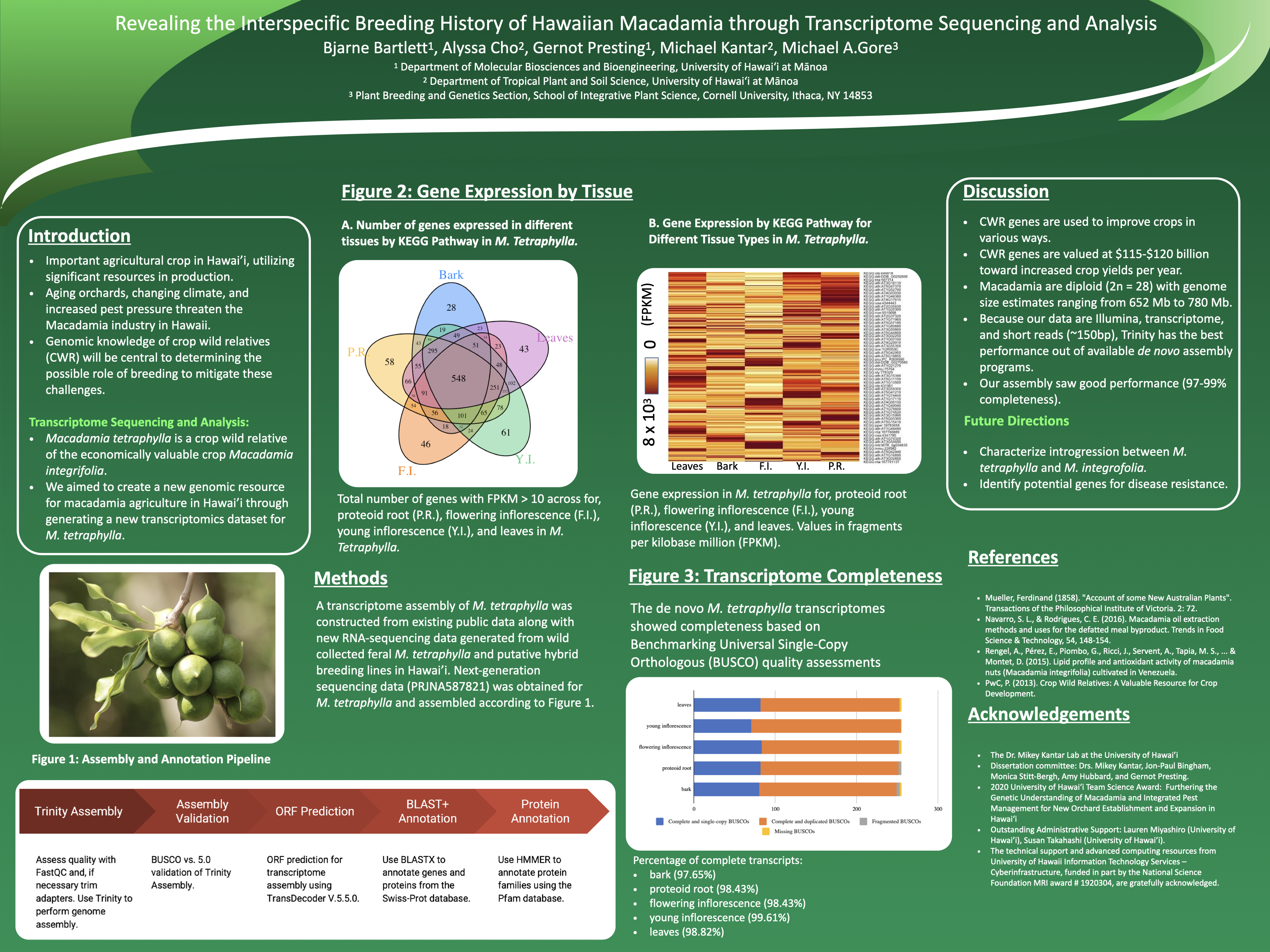
Revealing the Interspecific Breeding History of Hawaiian Macadamia through Transcriptome Sequencing and Analysis
Macadamia is an important agricultural crop in Hawai’i, utilizing significant resources in production. Aging orchards, changing climate, and increased pest pressure threaten the Macadamia industry in Hawaii. Genomic knowledge of crop wild relatives (CWR) will be central to determining the possible role of breeding to mitigate these challenges.
Explore the docs »
View Demo
·
Report Bug
·
Request Feature
Table of Contents
Macadamia tetraphylla is a crop wild relative of the economically valuable crop Macadamia integrifolia. We aimed to create a new genomic resource for macadamia agriculture in Hawai’i through generating a new transcriptomics dataset for M. tetraphylla.
A transcriptome assembly of M. tetraphylla was constructed from existing public data along with new RNA-sequencing data generated from wild collected feral M. tetraphylla and putative hybrid breeding lines in Hawai’i. Next-generation sequencing data (PRJNA587821) was obtained for M. tetraphylla and assembled.
CWR genes are used to improve crops in various ways. CWR genes are valued at $115-$120 billion toward increased crop yields per year. Macadamia are diploid (2n = 28) with genome size estimates ranging from 652 Mb to 780 Mb. Because our data are Illumina, transcriptome, and short reads (~150bp), Trinity has the best performance out of available de novo assembly programs.
This is an example of how you may give instructions on setting up your project locally. To get a local copy up and running follow these simple example steps.
This is an example of how to list things you need to use the software and how to install them.
- npm
npm install npm@latest -g
- Get a free API Key at https://example.com
- Clone the repo
git clone https://github.com/bjarnebartlett/Interspecific-Breeding-History-of-Hawaiian-Macadamia.git
- Install NPM packages
npm install
- Enter your API in
config.jsconst API_KEY = 'ENTER YOUR API';
Use this space to show useful examples of how a project can be used. Additional screenshots, code examples and demos work well in this space. You may also link to more resources.
For more examples, please refer to the Documentation
- Feature 1
- Feature 2
- Feature 3
- Nested Feature
See the open issues for a full list of proposed features (and known issues).
Contributions are what make the open source community such an amazing place to learn, inspire, and create. Any contributions you make are greatly appreciated.
If you have a suggestion that would make this better, please fork the repo and create a pull request. You can also simply open an issue with the tag "enhancement". Don't forget to give the project a star! Thanks again!
- Fork the Project
- Create your Feature Branch (
git checkout -b feature/AmazingFeature) - Commit your Changes (
git commit -m 'Add some AmazingFeature') - Push to the Branch (
git push origin feature/AmazingFeature) - Open a Pull Request
Distributed under the MIT License. See LICENSE.txt for more information.
Your Name - @bjarnebartlett - bjarne@hawaii.edu
Project Link: https://github.com/bjarnebartlett/Interspecific-Breeding-History-of-Hawaiian-Macadamia






